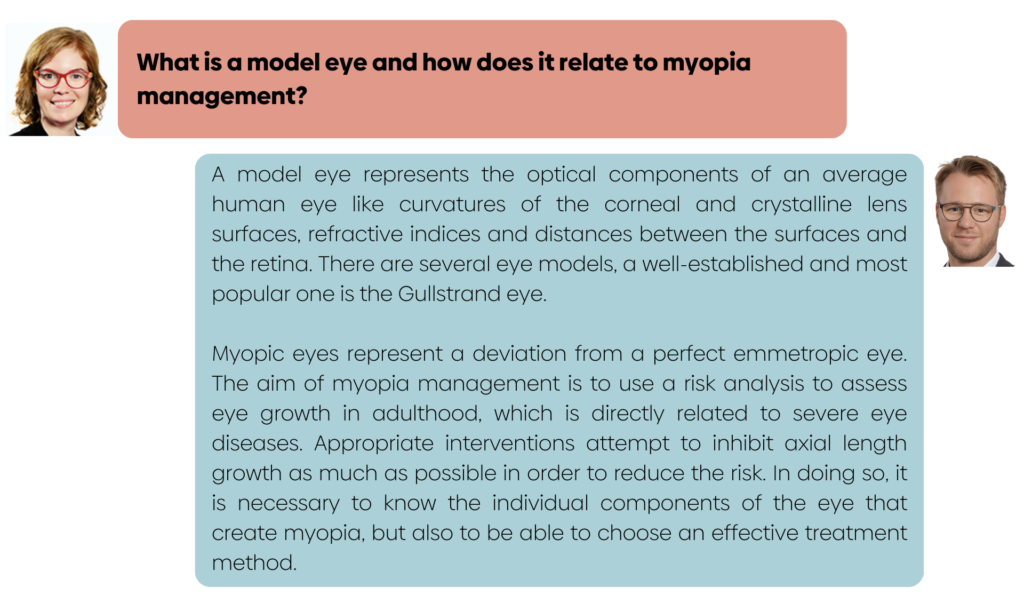Our new Q&A format is designed to explore a particular clinical topic, intervention, product or research paper with an expert. Here, we explore the Gullstrand Refractive Analysis System (GRAS) Module in the OCULUS Myopia Master with ophthalmic optics expert David Kern, from Germany. We also provide you some additional tips and links to further reading on putting this into practice.

You may remember the concept of a 'model eye' from back in your student days. Our new article Model eyes in myopia management explains more on how understanding the ocular power components of the eye can be applied to clinical diagnosis and individualized management decisions in childhood progressive myopia.

An interview with Max Aricochi, an Optometrist practicing in Austria, explains how he uses the GRAS Module for clinical communication, and to distinguish between refractive and axial myopia. Read more in this Q&A Interview with Max on the OCULUS Myopia Master.

In David's response above he identifies several less typical presentations where understanding the contributing structure to the refraction is extremely helpful. See this in action in this case study, where measurement of corneal topography and axial length helped to determine the cause of what appeared to be rapid myopia progression: Is it really fast progressing myopia, or something else?

It is crucially important to recognize that corneal changes can contribute to the appearance of myopia progression, which can occur without changes in axial length. As described in our article Measuring the whole eye in myopia, corneal changes and progression of astigmatism are NOT typical in progressive myopia. These can instead indicate risk or presence of corneal ectasia, as mentioned above.
Understanding corneal curvature can also help to identify myopes with a lower refractive power but longer axial lengths. Read more in this case study Are you measuring the cornea in myopia management?

The screenshot below (sourced here) shows the output from the Gullstrand Refractive Analysis System (GRAS) Module in the OCULUS Myopia Master, which models the power of ocular components to chart a child’s axial length, corneal power, crystalline lens power and refraction as contributions to their overall refractive error. In the image below, the right eye power components are charted in purple and the left eye components in blue.
The patient's ocular power components are indicated as either more myopic (left side of central vertical line) or more hyperopic (right side of line) compared to their age-matched peers. In this example, it is evident that axial length is a fairly close match to the level of refractive myopia observed. The corneal power is quite close to the emmetropic value for the model eye, and the crystalline lens power trends towards being slightly more hyperopic than expected for that patient's age. This indicates axial length as the primary contributor to this patient's myopia.

Further reading
About David Kern

David Kern is application and product manager at OCULUS Optikgeräte GmbH with over 12 years of experience in the field of optics. After three years of training in ophthalmic optics, he studied ophthalmic optics and psychophysics with a Master of Science degree. His experience includes theses in the field of perception and visual performance as well as progressive corrective lenses. David Kern has been with OCULUS since 2017 and is product manager for the Myopia Master® and the Pentacam®. Myopia management, contact lens fitting using topography and refractive diagnostics are among his main areas of expertise.
This content is brought to you thanks to an unrestricted educational grant from












